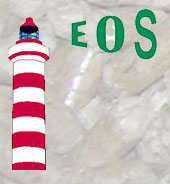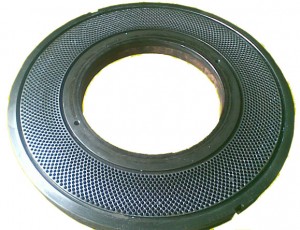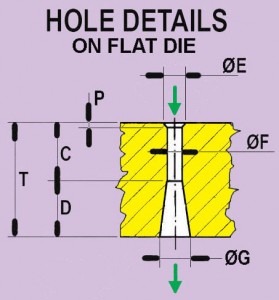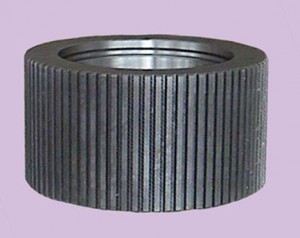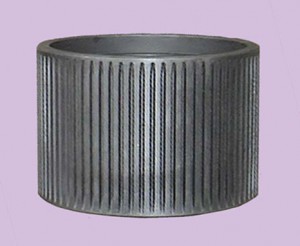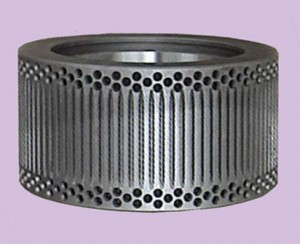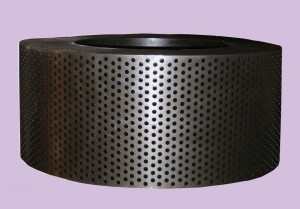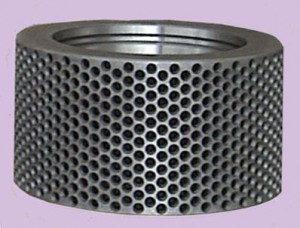| No many pellet mill producers still are using the flat die system, a derivation of the ancient cold-squeezing system for the olives used for the oil extraction, considerated a variation of the old cereals mill having stone rollers too. To be considered well built, all flat dies must have the holes location executed upon the circle evolvent principle, such as the profiles of the gears (please see side photo). For that reason it is undispensible the use of very special and automatic drilling units, so the manufacturers of those special spares are very rare. EOS has considerable experience about the flat dies. We got a huge archive of quoted drawings of the main types and models of flat pellet mills, since we commercialize all main spares and wearing parts for such kind of machines, naturally also included the roll shells. |
MAIN TECHNICAL TERMINOLOGY ABOUT FLAT DIES
C = NET DIE COMPRESSION. Strictly bond to the hole diameter, net compression is variable upon type of product to be pellettized too. Die compression also includes the entrance cone depth and corresponds to the cylindric portion of the hole, where the product is pressed and where the pellet is formed. On the dies called passing hole dies (side to side) or dies without any kind of counterbore, it corresponds to the value of the total thickness too.
G = COUNTERBORE BASE DIAMETER. Irrelevant to the productive scope, it is indicated just for the correct dimension during the die planning step. Just in case of cylindric counterbore dies, that today result rarely adopted because considered an old concept and not used anymore, counterbore base diameter corresponds to the same counterbore dimension.
P = ENTRANCE CONE DEPTH. With the exception of very rare cases, the entrance cone always is 1,5-2,0 mm. deep and the funnel inclination is 60°.
MAIN CHARACTERISTICS OF THE ROLL SHELLS
By the words “roll shell” is intended the outside cylindric surface of pressing roller, the spare part mainly subjected to the wearing. Shape and dimensions of the roll shells are variable, upon type and model of the pellet mill. Anyhow EOS got all quoted drawings necessary to fullfill the production of the roll shells for all main pellet mills present on the market worldwide.
Concerning the outside surface of the shells, that is available on 5 different versions:
DIMPLED
TYPE
|

